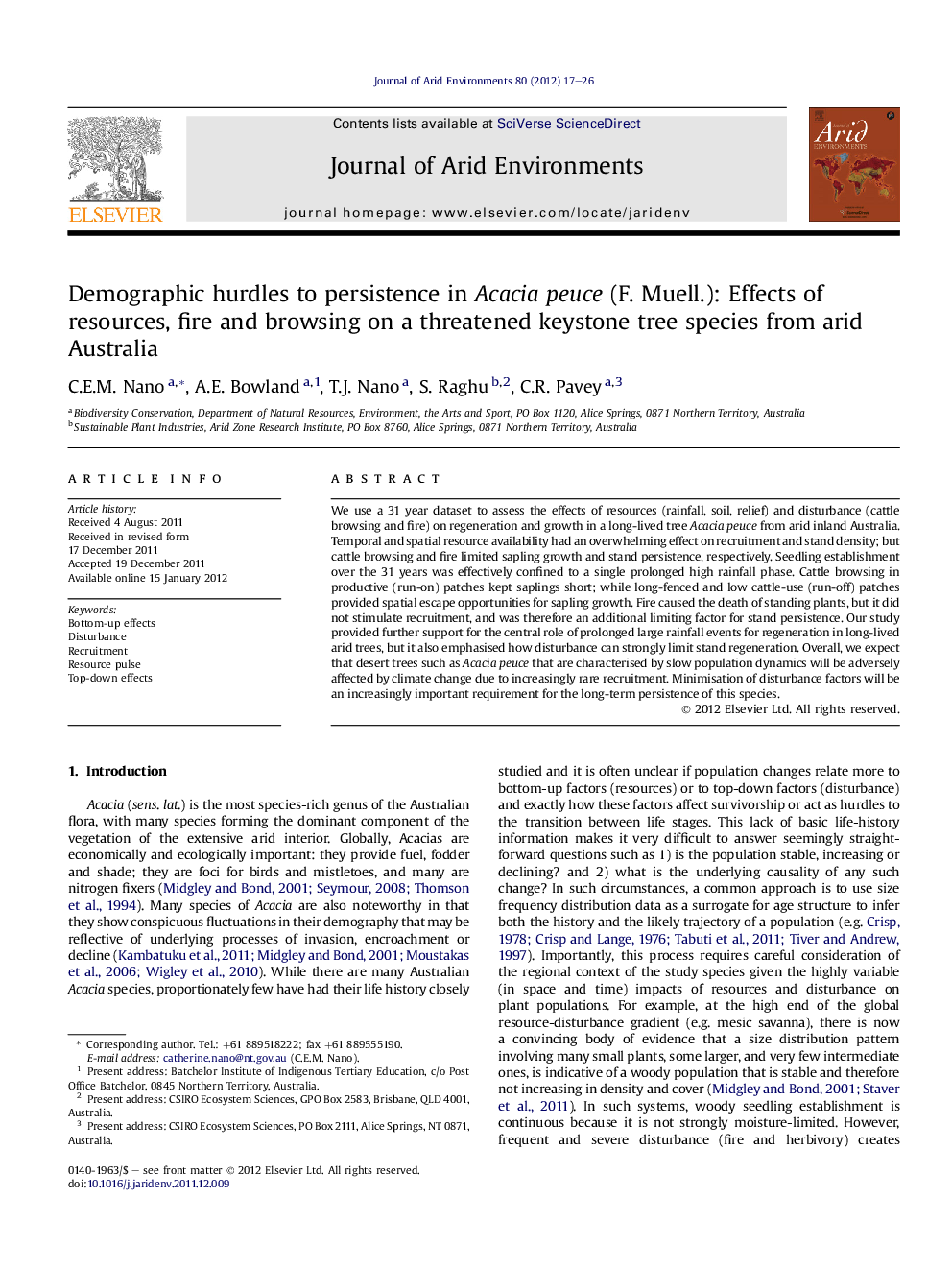| Article ID | Journal | Published Year | Pages | File Type |
|---|---|---|---|---|
| 4393383 | Journal of Arid Environments | 2012 | 10 Pages |
We use a 31 year dataset to assess the effects of resources (rainfall, soil, relief) and disturbance (cattle browsing and fire) on regeneration and growth in a long-lived tree Acacia peuce from arid inland Australia. Temporal and spatial resource availability had an overwhelming effect on recruitment and stand density; but cattle browsing and fire limited sapling growth and stand persistence, respectively. Seedling establishment over the 31 years was effectively confined to a single prolonged high rainfall phase. Cattle browsing in productive (run-on) patches kept saplings short; while long-fenced and low cattle-use (run-off) patches provided spatial escape opportunities for sapling growth. Fire caused the death of standing plants, but it did not stimulate recruitment, and was therefore an additional limiting factor for stand persistence. Our study provided further support for the central role of prolonged large rainfall events for regeneration in long-lived arid trees, but it also emphasised how disturbance can strongly limit stand regeneration. Overall, we expect that desert trees such as Acacia peuce that are characterised by slow population dynamics will be adversely affected by climate change due to increasingly rare recruitment. Minimisation of disturbance factors will be an increasingly important requirement for the long-term persistence of this species.
► 31 Years of monitoring used to examine demography in Acacia peuce a long-lived tree. ► Temporal and spatial resource availability affected recruitment and stand density. ► Cattle browsing limited sapling growth whereas fire limited stand persistence. ► Seedling establishment was confined to a single prolonged high rainfall phase. ► Findings are applicable to long-lived arid trees and shrubs.
